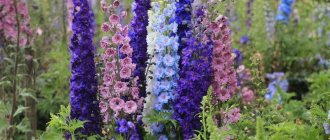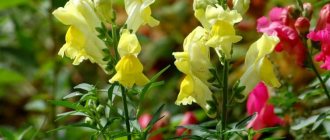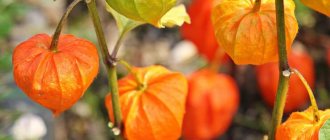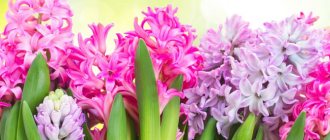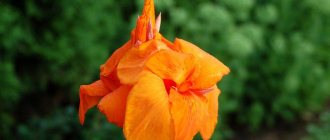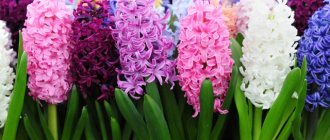Lavender as a flower crop
Lavender, or Lavandula, is a non-herbaceous plant. This is a shrub, a representative of the Lamiaceae species, which unites about 30 species. They can be found in Africa, Arabia, southern Europe, India, and Australia.
Interesting. Lavender is a symbol of France, or more precisely of one part of it - Provence. This is because during the Roman Empire, those same lands were used for growing this plant. It was considered very valuable and was sold for almost its weight in gold.
The first name of the flower comes from the Latin “lava”, which means “to wash”. This is because the ancient Greeks used it not only for medicinal purposes, but also for washing their clothes. A little later, the French christened the fragrant flora lavandre, and it was this name that spread throughout the world.
Self collection
If desired, seed material can be collected independently. To do this, you will need to cut off the inflorescences that have had time to fully bloom. After drying them, you should remove the small seeds, from which a pleasant aroma emanates.
Seed material remains viable for a long time. By following the rules of agricultural technology, you can germinate even those seeds that have been stored for more than 3 years. However, it is important to ensure proper seed storage, which involves keeping the planting material in a hermetically sealed container.
Advice! Before planting, it is recommended to select the largest seeds, the shell of which is not damaged.
Types of lavender
Rose seeds - what they look like, can you germinate them at home?
In total, this genus unites as many as 30 species. Of these, only two are most often cultivated. Namely:
- Lavender angustifolia (also known as English and medicinal);
- Lavender broadleaf (or French).
French lavender
English lavender is the most widespread throughout the world. It has narrow leaves and spike-shaped inflorescences. This is what is grown on the streets in the middle zone. This is because it can easily overwinter in the open ground; it does not have to be dug up and transplanted into the house.
The French look is much more capricious. It has wider leaves and shorter inflorescences. The most important difference is that French lavender is killed by cold temperatures below -10 °C. That’s why it is often grown at home; when grown in a garden, it must be dug up and moved indoors for the winter.
Interesting. Russian gardeners use two more types (albeit much less frequently than the first): Dutch, or hybrid, and serrated.
Diseases and pests
Lavender is particularly resistant to pests and diseases. If any appear, then the cause must be sought in improper care.
- Gray mold is a fungal disease that develops in conditions of high humidity and low (no more than 4 degrees) temperature. Brown spots and a fluffy coating appear on the tops, which eats away flowers, leaves, seeds and ultimately leads to the death of the entire bush. With dense planting, the disease moves to other shoots.
Way of fighting. The branches affected by the disease are cut off, taken out of the area and burned. The diseased bush is treated with Bordeaux mixture.
- Septoria disease is caused by the fungus Sepioria lavandulae Desm. Appearance time: early June. Some areas of the outer side of the leaf become convex and turn dirty red, which over time acquires other shades, while the brown border remains unchanged. Gradually the leaf dries out, curls and falls off. As a result, the plant weakens, does not tolerate wintering well, and flowering may not be expected. At best, rare inflorescences appear.
Way of fighting. Infected stems are cut off, and the bushes are treated with Bordeaux mixture at a three percent concentration and, if necessary, with fungicides.
The fungus tolerates cold well on infected leaves. When it warms up, its spores are carried by the wind to healthy bushes. Therefore, all infected shoots should be removed before winter.
- Fusarium wilt is a fungal disease that affects the lower part of the cutting: first it loses its healthy color, turns yellow, then acquires darker shades and dries out. When cutting the stem, you can find an emerging void in the middle and dark veins - dead vessels. The disease is dangerous because it first affects the root, the basal neck, then penetrates the plant and affects the entire vascular system.
Way of fighting. There is no guaranteed means to effectively combat this fungus. It is necessary to pay attention to preventive measures, since the pathogen appears in soil that has not gone through the disinfection stage. The reason may lie in improper watering and lack of proper hardening.
- Clover dodder. The plant has no roots or leaves. It wraps around a lavender bush, forms suckers at the points of contact, penetrates the internal tissue, merges with it, turning into a parasite. The dodder sucks water and minerals from the cells: the lavender bush dries out.
Way of fighting. If there are only a few dodders, then they should simply be removed mechanically. Otherwise, you will have to use soil herbicides.
Pests are not repelled by the smell of lavender. On the contrary, more than 20 species mistake the plant for a delicacy. They eat everything from the above-ground parts of the plant to the roots.
The most common pests include:
- Spider mites are the most dangerous among the rest. Due to its microscopic size, it is difficult to detect, and therefore it is not immediately clear why the plant dies. If they appear in a crowd, they can be detected by the resulting web. The mite draws out the sap, and therefore the dehydrated plant loses its leaves and then dies. Their invasion is especially noticeable during dry times.
Way of fighting. Spraying with a solution based on laundry soap. The drug “Nero” is suitable for killing tick eggs;
- Leperonia Coleoptera. It is not the insect itself that causes particular harm, but the larvae that it places on the stem. The offspring secretes a liquid that corrodes dense fibers. The plant leaks juices and gradually begins to dry out.
Ways to fight. Treatment with insecticides, digging up the area and disinfecting it;
- selenocephalus pallidum. Insect larvae emerge from the eggs at the same time as the birth of lavender buds. To accelerate growth and development, they eat leaves and buds; adult individuals do not disdain the stem.
Way of fighting. Treating the soil with insecticides and deep autumn digging of the site;
- Agalmatium biloba. The object of attention is leaves. Eggs are laid on their underside. It is impossible to detect: they are tiny and sticky, immediately covered with a layer of dust and turn into an earthen lump. They manifest themselves as numerous dark spots on the leaves, then their gradual drying out.
Way of fighting. Treating the area with insecticides.
Often on the stems of lavender you can see a substance shiny in the sun, a film similar to foam. This is a slobbering pennice. It does not cause any noticeable harm to the plant, but spoils its decorative appearance. In this case, it is recommended to wash off the larvae with water from a hose.
Benefits and Applications
Hydrangea seeds - what they look like and whether it is possible to grow seedlings from them at home
Even the ancient Greeks noted the benefits of this flowering plant. As time passed, the boundaries of people’s knowledge about the world expanded, and to this day there is no doubt about the beneficial qualities of lavender.
The most important thing for medicine in this flower is its essential oil. It can be obtained by squeezing the entire above-ground part of the flora (and not just from the flowers, as some believe). The oil has a rich composition: it contains linalool, coumarins, geraniol, borneol, and other useful elements. Thanks to them, lavender essential oil can be used in the following ways:
- For healing abrasions and cuts.
- For dizziness, headaches.
- For insomnia and nervous disorders.
- For toothache.
- To get rid of swelling.
- For discomfort in the stomach and intestines.
- As an anthelmintic.
The flower is used in folk medicine in different ways: lavender seeds, its sprouts, flowers, and leaves are used. Teas and poultices are made from it. It is added to ointments and baths are taken with it. Lavender oil can be used for aromatherapy.
Aromatherapy oil
Moreover, official, scientifically proven medicine also uses this flora. True, in this case, flower extract is more often used.
What tools and equipment will be required?
To plant lavender seedlings you will need hand gardening tools.
In this case, you can use a special scoop. This device consists of a comfortable handle made of wood or plastic and a metal blade in the form of a trench for gripping the ground.
A garden scoop is convenient for making holes and transferring seedlings without disturbing the earthen ball at the roots.
You can also use a special cone to plant lavender seedlings.
This device allows you to make even, neat holes in the form of a cylinder. The conical body of the tool is made of durable steel, which makes it possible to work on any type of soil. And the handle is made of wood or plastic. The design is convenient for planting and allows work to be done in a short period of time.
Lavender varieties for home cultivation
Geranium seeds - what they look like and how to sow them for seedlings
Lavender is a flower that can be grown both in the garden and at home. In this case, for the second purpose, the French type of flower, jagged or hybrid, is usually chosen. They are small and afraid of frost, so in the middle zone it is better to immediately grow them at home. Among the variety of varieties, the following are especially interesting:
- Helmsdale. This is a variety of broadleaf lavender. It differs in the color of the flowers - it is not lilac, rather burgundy.
- Alba. This variety is a variety of Dutch lavender. Its difference is white flowers.
- Sawyers. This is also a hybrid lavender, the flowers of which have a purple tint.
Variety Sawyers
- Royal Crown is a variety of jagged lavender with soft lilac flowers.
2nd year of lavender: flowering
Lavender blooms in the second year after sowing seedlings. Young bushes may look inconspicuous in the spring, but you are not in a hurry to throw them away; by mid-to-late May the lavender will come to life, and by July it will begin to bloom.
Lavender bush April 28, 2020
After winter, it is useful to hill up young lavender bushes by covering the bottom of the plant with soil.
Lavender is waking up! Lavender bush May 15
At the beginning of July, the first flower stalks will appear and by August you will have a beautifully flowering lavender bush.
Lavender blooms for the first time, July 19. In the spring, we sowed Eschscholzia around the lavender: the orange flowers of the Californian poppy combine very beautifully with the purple flowers of lavender.
How to collect seeds for sowing
Gardeners prefer propagating lavender through seeds. You can get them in two ways: by collecting them yourself and by choosing them in the store. Each case has its own subtleties that you need to know.
Collection
You can collect fully bloomed inflorescences in the garden (or by buying a bouquet with them in the store) and dry them. After this, small seeds will fall off.
Lavender seeds have one characteristic feature - amazing germination. Even after five years from collection, they can sprout. But only with proper storage (in an airtight container) and germination.
Purchase
It is difficult to determine from the seeds themselves whether the variety is sold in a paper bag or not. In order not to be surprised by the replacement of a flower after the sown seeds have sprouted, first of all you need to look at the price. The more interesting and beautiful the plant, the more expensive its seeds will be. They don't come cheap.
Lavender seeds from the store
The second point that you should definitely pay attention to is the information on the packaging. It should contain:
- Variety name;
- Manufacturer;
- Recommendations for care.
Possible errors and difficulties
Sometimes even minor mistakes by a gardener when planting seedlings in a permanent place can lead to the death of plants.
And to prevent this, you should familiarize yourself with them in advance. Possible problems :
- Early transplant . At the initial stage of development, lavender seedlings are still very vulnerable and cannot tolerate sudden temperature changes. Therefore, replanting should not be carried out in early spring, while there is a possibility of return frosts.
- Heavy ground . This perennial can fully develop only with good soil aeration. If there is no access to the roots of air, the plant begins to wither and dies.
- Close proximity of tall crops . Lavender belongs to the category of light-loving plants. It should be planted in open areas for long and lush flowering.
Seedling care
In order for a lavender seed to produce strong, healthy shoots, you must follow a number of rules for caring for it. In particular, these are:
- Light. Lavender is an extremely light-loving plant, so under no circumstances should it be placed in the shade.
- Warm. The flower will not like either heat or cold - temperature readings should vary between 15-21 °C.
- Picking. Diving is transplanting sprouts into a larger container. It is more convenient to germinate seeds in a shallow box. As soon as the lavender sprouts produce their first pair of true leaves, they need to be transplanted into a deeper pot. It can be separate or shared (with a large distance between the seedlings), but it is quite spacious in any case. This is because the small-looking sprout has quite strong roots, which are cramped in the germination vessel.
Advantages and disadvantages
The seedling method of growing lavender has its advantages and disadvantages. And before you give it preference, you need to familiarize yourself with them in advance.
Main advantages:
- optimal conditions at the initial stage of plant development;
- seedlings grow strong and healthy;
- Early boarding possible.
Flaws:
- the likelihood of root damage when planting in a permanent place;
- long-term adaptation of plants.
What is needed for seed germination
When the seeds of fragrant flora are sown in the ground, they do not yet require replanting, fertilizing and many other conditions. So far they have only two requirements, but they will have to be complied with:
- Lighting. Lavender seeds need about 10 hours of daylight per day. If the weather does not allow the condition to be fulfilled naturally, the seedlings will have to be illuminated.
Additional illumination of crops
- Temperature. For germination, you must strictly adhere to the temperature conditions indicated above.
Advantages of growing seedlings from seeds
Seed propagation allows you to quickly obtain a large amount of planting material for any landscape composition. In this case, the costs will be many times less than when purchasing the same number of seedlings.
It is also important that lavender grown from seeds turns out to be better adapted to local conditions, more durable, and resistant to adverse environmental factors. Such plants develop a strong, well-branched root system; they take root faster after planting in the ground.
And of course, varietal diversity plays a significant role: the range of lavender seeds is quite wide, and you can constantly add new samples to your collection.
Author of the article: Oksana Visochanska
Instructions for sowing seedlings
With a flower such as English lavender, growing from seeds at home requires adherence to a certain order and rules. However, with other species everything is the same.
Selection of seed
You can collect the seeds yourself or buy them in the store. In any case, they must meet the following criteria:
- To be collected from fully bloomed inflorescences.
- Properly stored at average temperature (not frost or heat), in a closed container.
- Not be damp or spoiled by pests.
- When buying, don't be cheap.
Seed stratification
Even if chosen correctly, a lavender seed will not sprout on its own. He needs stratification. This is a natural “launch” of the seed growth mechanism by exposing it to critical temperatures. Moreover, it can be carried out both at high and low degrees. In the case of this particular flora, stratification is carried out only by cold.
And there is one peculiarity. It is not enough just to put the seed in the refrigerator for a minute - the exposure to frost should last quite a long time.
What is stratification?
Stratification is carried out in two ways: natural and artificial. The first is to sow the seed immediately into open soil before winter.
To grow lavender from seeds for seedlings at home, you need to know how seeds are artificially stratified. This means that they should be kept in the cold for at least a month and a half before sowing. More is better. This procedure is carried out as follows: the seed is mixed with sand or soil and placed in a closed container. It is sent to the refrigerator for at least 8 weeks, at a temperature of about +5 °C. But the seed will not survive freezing.
Seed stratification in the refrigerator
Where to sow the seeds
In addition to other preparations for sowing, the gardener is faced with the question of choosing a container and soil.
Lavender needs loose, nutritious soil. The easiest way is to buy a ready-made mixture for seedlings or a universal one for indoor plants in the store. But before germination, it is recommended to bake it in the oven.
The container should be wide, spacious, and shallow - no more than a cm in depth. It will not be possible to make your life easier and germinate a flower in a cassette - this method is not suitable for it.
Sowing
The sowing itself should be carried out according to the following step-by-step instructions:
- The calcined substrate is placed in the container. It cannot be crushed; it must be loose.
- The soil must be well sprayed with water from a spray bottle.
- Flower seeds are laid out on top of the soil quite rarely - with indentations of at least 2 cm from each other.
- They need to be covered with soil on top too, sifting it from above. The top layer of soil should be 2-3 mm.
- After sowing, be sure to make a greenhouse by covering the container with cling film.
Transplanting seedlings into open ground
During the first year of germination, you should not expect flowers or, in fact, a smell from the fragrant flora. She will spend this time forming roots and will bloom only next year. With the onset of warmer weather, the sprouts can and should be transplanted outside. How to plant lavender seedlings according to the rules:
- The place for sprouts needs a sunny, warm place.
- The perennial prefers sandy-clay soil.
- The soil for lavender must be fertilized with mineral fertilizer before planting.
- The spaces between the bushes should be at least 30 centimeters (preferably all 40).
- Lavender seedlings need to be hardened off before replanting. Pots with it should be taken outside for several hours during the week.
Lavender seedlings outside
How to care for seedlings
For friendly shoots, lavender seeds need bright light and a temperature of +16 to +21 degrees. We ventilate every day. As necessary, spray the soil with a spray bottle.
Photo: Bright light promotes rapid emergence of seedlings.
Watering lavender seedlings
When watering, you need to stick to the golden mean. Do not overfill the soil, but always keep it in a stable, slightly moist state. If there is not enough moisture in the soil, you will not get successful shoots.
| Important. We start watering from a watering can when we have planted them in individual pots and they have taken root there. The first shoots will appear in about 2–4 weeks. |
Features of cultivation
As soon as the shoots appear, we begin to gradually remove the shelter. We make sure that the earthen lump is slightly damp all the time. We place the seedlings in the most illuminated place, possibly with access to sunlight. Southern and southwestern window sills are ideal. Daylight hours should be 9–10 hours. If there is not enough light, then we will organize lighting.
Photo: After germination, release the containers from the shelter.
Picking lavender seedlings
After a couple of true leaves appear, we dive into separate pots. It is best to dive into separate containers with a diameter of 6–7 cm. Transparent plastic cups or seedling pots from the store are ideal. You can also plant them in cassettes.
Taller and larger seedling boxes will also work. When planting in them, maintain a greater distance between the bushes. When replanting, we try to keep the earthen ball on the roots. Lightly press the soil with your fingers and water with settled water at room temperature.
Hardening off lavender seedlings
Before planting in open ground, lavender seedlings must be hardened off for 1–2 weeks. We gradually increase the time spent on the street or balcony. Protect from direct sunlight. After 5–7 days, we no longer remove the seedlings indoors at night. After a few more days, we plant it in the ground and leave it in the sun.
When planting in open ground, make sure that there will be no more return frosts. If frosts are predicted, then cover the seedlings at night on these days and open them during the day. As you already understood from the article, growing lavender seedlings is quite simple, try it: you will definitely succeed!
Photo: Send the seedlings to the balcony to harden them.
______________________________________________________________________________________________
Sowing seeds directly into the ground
Lilac flowers can be grown more simply, without preparing seedlings. You need to know how to properly plant lavender using seeds.
Landing dates
In order for the lavender seed to begin to grow, it must be stimulated by cold. For seedlings, you have to keep the seed in the refrigerator. When sowing directly in open ground, you don’t have to mess around with it directly - it is carried out in the fall, in October, stratification will take place naturally in the winter.
Loosening and fertilizing
After wintering during the growing season, lavender must be fed. It is better to choose fertilizers high in potassium rather than nitrogen. Otherwise, the bush will stretch strongly upward, but will produce few buds.
This flora also needs to be cultivated. It needs to be loosened after winter and also mulched. Mulching is the creation of a layer on top of the soil, which helps moisture not evaporate so quickly. Fallen leaves are suitable for these purposes. Do not mulch the ground right down to the lavender root.
Mulching lavender bushes
Watering
This flower loves water. It needs to be watered regularly, not allowing the soil to dry out. However, thanks to mulching, the plant will not require so much water. Watering most likely will not be necessary every day.
Caring for a young plant
During the first year of life in open ground, lavender should not be allowed to bloom; it is recommended to pick off all inflorescences. This is because at this time the root of the flora must become stronger and adapt to the new location.
Preparing for winter
English lavender can easily withstand frosts down to -25-30°C. But without additional shelter, the flower may not survive such low temperatures.
First, you need to prune the bush. Only 4-5 young shoots are left on it, the rest is cut off.
Secondly, even before the first frost, the bush needs to be tightly covered with spruce branches. Fallen leaves cannot be used - there is a high chance of rot occurring. You can cover crops with leaves. When the first snow falls, it is recommended to separately heat it in a dense layer onto makeshift shelters. This will give the plant the opportunity to survive the winter safely.
Features of care after disembarkation
After transplanting the seedlings to a permanent place, it is necessary to provide complete care for the seedlings. At first, you should control the soil moisture, preventing the roots from drying out .
Subsequently, watering should be carried out every 7-10 days when the top layer of soil dries out.
You need to feed lavender during the period of active growth of shoots, before flowering and after flowering. In the first case, it is recommended to use organic matter or urea. And for the second and third feeding, phosphorus-potassium mineral mixtures should be used.
Caring for a perennial requires mandatory pruning of the plant. The procedure should be carried out after flowering, cutting off the peduncles with 2-3 upper leaves. Pruning is also necessary in the spring. At this time, you should shorten the lavender shoots by 1/3 of their length.
Caring for lavender in a pot
This flower can also be grown as a houseplant. Growing lavender from seeds in this case will be similar to how it is done for seedlings. In the future there will be only a few special points for flower care:
- Indoor fragrant flora can more easily tolerate dry soil than excessive humidity.
- The room with lavender will have to be ventilated often. In winter, you should definitely take the flower to another room. The frost will kill him.
- At the bottom of the pot you must create a layer of expanded clay drainage.
- Houseplants need 6-8 hours of daylight. It is best to place the flowerpot with it on the sunny side. In winter, additional illumination with a special lamp may be required.
Lavender in a pot at home
In general, lavender is not a fussy plant. If all the necessary conditions are met, the seeds will quickly produce seedlings, and those, over time, will become lush bushes. Soon a person’s apartment or dacha will be decorated with a bush with incredibly fragrant flowers.
Further preservation of lavender: preparation for winter
Lavender, which began to bloom in mid-July, bloomed in our flower garden until the end of October. At the end of October, on the eve of the onset of frost, lavender should be cut back to the woody part, mulched and left to overwinter. Now it is already an adult bush, which every year will grow and bloom more actively and en masse.
Two-year-old lavender angustifolia bush, prepared for winter
Read our special material on how to properly prepare lavender for winter>>>
Watch a video about growing lavender from seed to flowering bush: very short
Selection of containers and soil
To plant lavender seeds, you need to choose the right container. It is advisable to give preference to wooden or plastic containers. The recommended container depth is between 30-35 cm.
A drainage layer is placed on the surface of the bottom of the pot, which will make it possible to avoid rotting of the root system, which develops against the background of the accumulation of excess moisture. The height of the drainage layer should reach 5-6 cm.
It is recommended to sow seeds at the end of winter. Containers are filled with soil mixture, which includes:
- garden soil;
- a small part of river sand;
- humus.
Important! The soil mixture must be sifted, which will make it possible to get rid of large lumps that prevent small seeds from sprouting. Also, do not forget about the need to water the soil with a weak solution of potassium permanganate before planting.
Lavender seeds are planted in containers filled with soil mixture. The soil is moistened generously with a spray bottle. The upper part of the soil is sprinkled with a small layer of sand. The container is covered with polyethylene material. The container is transferred to a room where the temperature reaches 18-22 degrees.
Choosing a place in the house
When choosing a place to place pots of lavender, it is worth considering that the perennial crop needs good lighting. It is best to place containers with flowers on a southern windowsill. In the warm season, it is advisable to take pots of lavender to the veranda/balcony.
In the cold season, the plant may suffer from a lack of sunlight. Experienced gardeners recommend additional lighting in the winter months using phytolamps. The duration of daylight at any time of the year should reach 10-12 hours.
